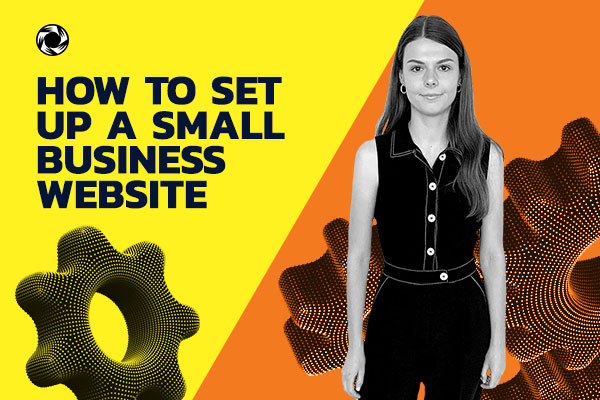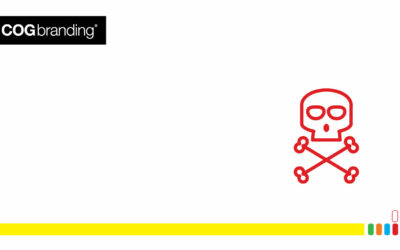SETTING UP A SMALL BUSINESS WEBSITE IS EASY WHEN YOU HAVE SUPPORT FROM A WEBSITE DEVELOPMENT AGENCY LIKE COG BRANDING
A business website can be as simple as a page with your business’s brand and contact details to a complete online store. With a broad range of information, products and services available online, having a website means you won’t be left behind. All of the website builders in today’s market have extremely intuitive editors which means you can get to grips with their features in no time at all, though it does require dedication and often support from a web design company like COG Branding. This means you could have your small business website set up in a matter of hours, but a website needs aftercare and to perform on Google you need to constantly add value to it. Understand the benefits of having a website and follow the COG Branding steps to set up your own business website.
1. Benefits of a website
Having a small business website allows you to display details of your products or services and get your brand out to your audience. It can become your shop front, available to customers all over the world. A website can be important to your business’s success and growth. Some of the benefits of having a website for your business may include:
- giving your business a digital shopfront
- allowing your business to be open 24 hours a day, 7 days a week
- reaching a global audience
- helping your customers to access your products or services anywhere, anytime
- using it for marketing to sell and promote your products and services
- increasing customer engagement
- creating or enhancing your brand and reputation
- improving your business productivity and efficiency.
It’s important to do your research before you develop a business website. Choose an option that is useful and targets your products and/or service. To stand out from other businesses, you’ll also need to find a way to make your online presence unique. Follow our steps for the basics on developing a business website, you can start by reading more about how COG Branding marketing digital services and our skill is aimed at providing the right website solution for all types of small Australian businesses. This includes, the type of CMS, the site architecture, design and content. Open Source, Proprietary and custom development.
2. Decide on your website type
If you want to be able to sell your products or services online, then you’ll want to invest in a website with an e-commerce platform. If you just want a website that tells your customers where you are and what products or services you offer, then a basic website or a blog might be suitable.
3. E-commerce
With e-commerce you can accept payment for your products or services online. Check our information on how to buy and sell online if you decide on an e-commerce website. You may want this type of website to supplement your physical shop, or as your only point of sale.
4. Blogs
A good blog should provide useful and engaging content for your customers and a positive image for your business. A bit like a journal, a blog is usually updated regularly. Most successful blogs consist of a regular flow of new, relevant posts to get people coming back.
5. Decide if you want a template or custom website design
A relatively straightforward way to build a basic website is to use a free package that gives you a template design and a web content management system (CMS). If you want to build a more complex website, you’ll need to hire a web professional.
6. Pick and register your domain name
As part of going online, you’ll need to choose a web address, or domain name. It’s worth spending some time considering this decision – your domain name is an important promotional tool. To make sure your customers know you are an Australian business you can register a domain with the .au extension at COG Domains.
7. Choose a web hosting service
You’ll need a web hosting service, choose one based on your business needs. To be publicly available, a website needs to be stored on a server that is constantly connected to the internet. If you’re using a third party’s pre-made website template and CMS, they may have web hosting packages you can choose from.
8. Build your website
When building your website, there are a number of things to consider. These include:
- understanding your customers and how they’ll use your website
- the website design and usability
- making your website accessible
- making your website mobile friendly
- your search ranking.
9. Search engine optimisation (SEO)
SEO is the set of techniques used to help search engines find, understand and rank your website against similar websites. There are different factors that can help your website rank well. Find out how using keywords and meta description tags can improve your search ranking.
10. Launch your website
It’s important to test your website before you launch. This ensures your customers can easily navigate around it and successfully buy your products or services. When you are ready to go live, let your customers know that you are launching your new website. Encourage customer feedback to help you improve your site once it’s live.
11. Other online channels
If you’re not ready to commit to a website or don’t have the budget to hire an expert, here are some useful tools your business can use to connect to your customers online such as social media platforms and e-marketplaces online directories, such as business or suppliers’ directories.
COG Branding can set up your small business website, our Sydney digital marketing agency are experts at managing the complex suite of digital marketing products and softwares. We have the skills and experience to integrate intelligent business solutions that link your customers to your branded digital touchpoints and assets.



